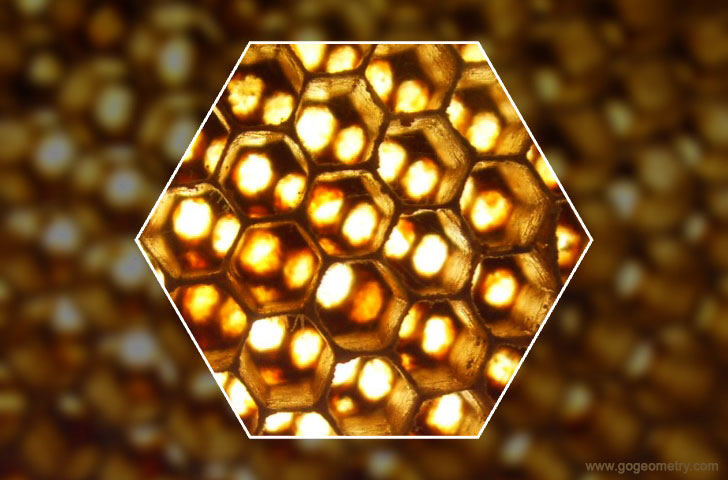Geometry:
Hexagon
on blurred background of a Honeycomb

Hexagons and honeycombs are two interrelated geometrical
concepts commonly found in nature and human-made structures.
A honeycomb is a collection of hexagonal cells that are
tightly packed together. It is commonly observed in natural
structures such as beehives, the eyes of dragonflies, and
some plants. The hexagon is a six-sided polygon with six
angles and six vertices. It is a popular shape in both
natural and human-made structures.
In a honeycomb,
hexagons are used as a fundamental unit to create the
structure. This results in a honeycomb structure that is both
strong and efficient. The hexagonal shape is a preferred
shape in honeycombs due to its ability to cover a large area
with minimal material, creating a structure that is
lightweight and durable. Moreover, the hexagonal shape is
ideal for packing tightly together, leaving no gaps or wasted
space between cells.
The hexagonal honeycomb structure
is widely used in engineering and manufacturing industries.
It is commonly used in aerospace, construction, and
automotive industries due to its high strength-to-weight
ratio and its ability to absorb and distribute forces evenly.
The hexagonal shape is also used in art, design, and
architecture for its aesthetic appeal and its ability to
create visually appealing patterns.
In summary,
hexagons and honeycombs are two geometrical concepts that are
commonly found in nature and human-made structures. The
hexagonal shape is used as a fundamental unit in honeycomb
structures, resulting in a strong and efficient structure
that is widely used in engineering and manufacturing
industries. The hexagonal shape is also appreciated for its
aesthetic appeal and is used in art, design, and
architecture.
Hexagon
A polygon with six sides.
Honeycomb
A honeycomb is a mass of hexagonal wax cells built by honey bees in their nests to contain their larvae and stores of honey and pollen.
Read more.
See also:
Word
Cloud of Hexagon
|